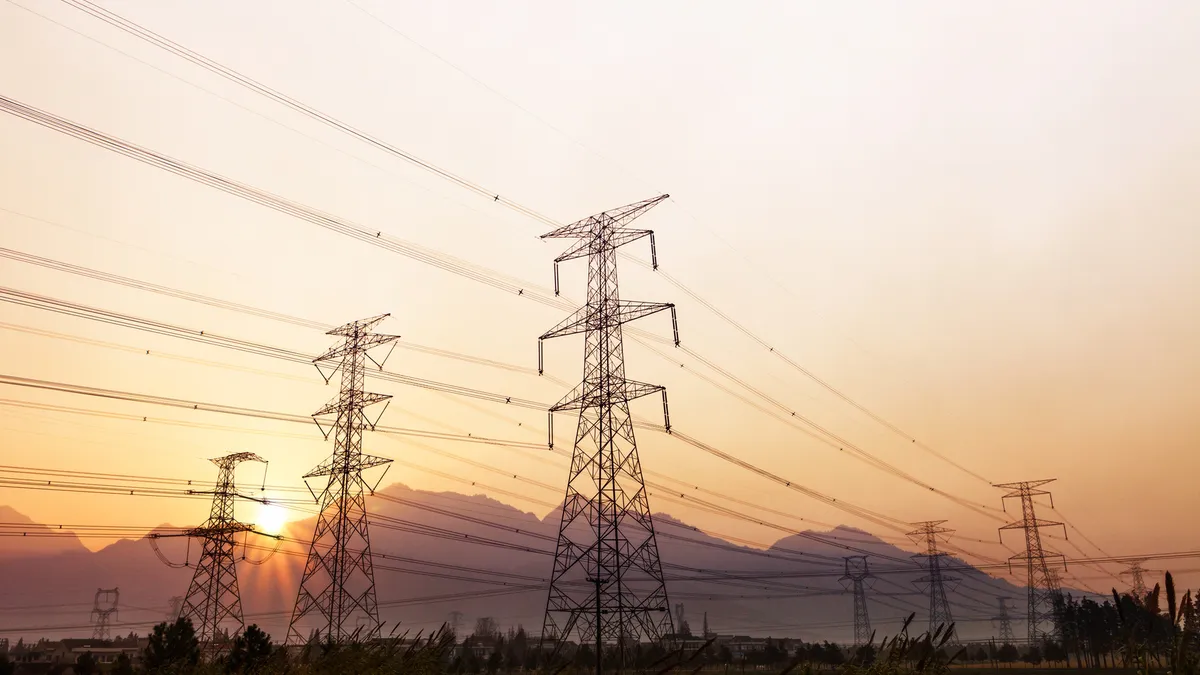Dive Brief:
- While electric grid operators have so-far managed the COVID-19 pandemic effectively, there are potential reliability issues that "increase industry's risk profile" if the virus impacts extend into the summer demand season, according to a new assessment from the North American Electric Reliability Corporation (NERC).
- Workforce and supply chain interruptions, uncertain demand forecasts and the potential for unplanned outages due to deferred maintenance and refueling issues could challenge the Bulk Power System (BPS), should the novel coronavirus pandemic continue into the hottest months.
- While NERC identifies increased penetration levels of distributed energy resources (DERs) as a challenge, other industry experts say a modernized grid will be an asset. "Many of the risks and challenges identified by the report are related to our current dependence on large central station generators," Rocky Mountain Institute Managing Director Leia Guccione told Utility Dive.
Dive Insight:
The global pandemic is unlikely to impact grid operations during the spring shoulder season, but NERC on Thursday warned that the situation could change if the public health risks associated with COVID-19 continue for an extended period of time.
"As pandemic mitigation and containment strategies continue, prolonged periods of operator sequestration and deferred maintenance on equipment increases the industry's risk profile and could exacerbate impacts to the BPS during the summer months and potentially over the longer-term horizon," NERC said in its spring assessment.
Reliability considerations include: increased uncertainty in demand projections; the potential for increased forced outages; above normal operating voltages; light load conditions; reverse power flow and increased DER penetration; and the potential for unloaded under frequency/voltage load shedding schemes.
The electric sector "appears well-positioned for spring operations," John Moura, NERC's director of reliability assessment and performance analysis, said in a statement. "While we have not identified any specific threat to the reliable operation of grid, we are in unprecedented territory and must continue to be prepared for the cumulative unknowns that are increasing industry's risk profile."
NERC's assessment identified reactors at 56 nuclear power generation sites in the United States that are scheduled for refueling this year. The refueling work is often done by large groups of contract workers who move from one plant to the next.
Those refueling operations "could be at risk if the virus were to spread amongst the workers," according to the report.
Most generation maintenance also occurs in spring and fall, when temperatures are milder and loads lower. Those resources "could face increased forced outages if maintenance activities are deferred or limited by the pandemic," according to NERC.
While delayed plant work typically does not impact reliability in the short term, "the longer the COVID-19 affects normal operations, the more likely deferred maintenance will become a factor," Hector Artze, a partner in Guidehouse's global energy, sustainability, and infrastructure segment, told Utility Dive. Guidehouse was formerly known as Navigant Consulting.
Utilities are continuing to perform reliability-related work, though they are often taking creative approaches. In New York, power plant workers have been camping onsite with 30-day shifts.
In a scenario where the pandemic impacts refueling and maintenance, the rotating equipment and required maintenance and servicing of centralized power plants can become a liability, according to RMI's Guccione.
"At a time such as this, renewable energy systems and DERs with few or no moving parts and minimal manning requirements can become an even more valuable resource in a generation portfolio because of the simplicity of their operation," Guccione said in an email.
Distributed resources: Problem or solution?
North American power markets can expect disruptions lasting at least 18 months due to the economic shutdown, according to analysts at Wood Mackenzie. Across North America, loads have declined 5% to 15% with significant regional variation.
Weekday load profiles are looking more like the weekend — meaning grid operators are adjusting, but also witnessing familiar demand conditions.
According to NERC, in high DER penetration areas minimum loads and reverse power flows from the distribution system "can cause some challenges for system operators."
"With lower amounts of BPS generation on the system, DERs during especially sunny days will have a considerably higher level of penetration of the total resources serving load," the report found. "The recalibration and assessment of the performance of load forecasting models is currently the focus of the load forecasters."
NERC's assessment focuses on the challenges associated with distributed generation, which "misses an opportunity to flag how DERs can be part of the solution, not part of the problem," according to Mark Dyson, a principal in RMI's electricity program.
"In the long term, especially in the context of the compounding risks presented by the current pandemic combined with extreme weather driven by climate change, it is important for grid operators to use all the tools available to them, including DERs, to mitigate resilience and reliability issues," Dyson said in an email.
The ability for renewables to ramp down their output could be a key to maintaining reliability.
"System operators will need to plan for potentially large over-generation conditions on their system," Himali Parmar, who leads ICF Energy's electricity transmission modeling and analysis team, told Utility Dive. "Under these conditions, one may expect to see significant curtailment of renewable power. If the demand variations are sudden, it may lead to over-voltages and frequency deviations," in particular during off-peak hours.
Wind, solar, and battery resources are "well-equipped to help manage any unusual reliability needs," according to Michael Goggin, a consultant on grid-related matters for clean energy clients and vice president at Grid Strategies. He also serves on the NERC Planning Committee.
"To the extent lower electricity demand does require reduced electricity supply, if conventional generators are physically unable to reduce their output quickly enough, the output of wind, utility-scale solar, and battery resources can be quickly and accurately dispatched down to balance supply and demand," Goggin said. "Similarly, their advanced power electronics can be used to quickly and accurately regulate power system voltage."
"Wind, solar, and battery resources should be relatively immune to potential disruptions compared to conventional generators," Goggin said.














